When many people think of the Desert Southwest, the iconic Saguaro cactus comes to mind. I remember seeing my first saguaro, crossing over the California Arizona border. When I first saw them, it was hard to believe that they were real. They were so strange looking to my eyes.
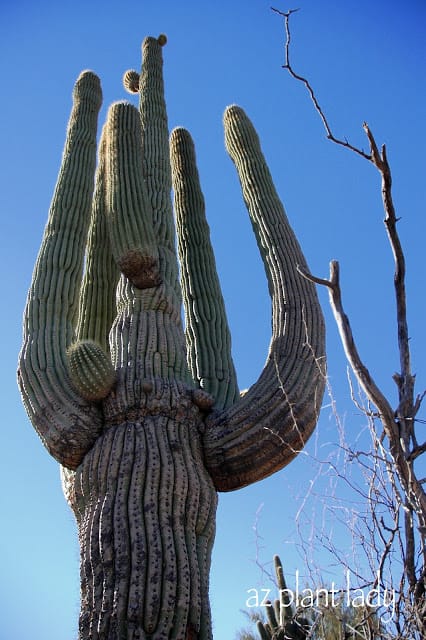
Throughout my career as a horticulturist, I have had many interactions with these beautiful cacti. Most of them were quite wonderful really, but there were some that were not so much fun…..
One incident was quite painful. I remember a time when we were creating pathways for a potential botanical walk when I spotted a small saguaro (8 inches tall) that was directly in the path, so I had it dug up in order to place it elsewhere. Well, I pricked my thumb on one of the spines, but I didn’t think anything of it because I frequently stuck myself with other types of cacti and agave.
Well my thumb began to swell….and swell. It got to the point 3 days later that I could not use my hand, so I had to go to the doctor for some antibiotics, which took care of the problem. Spines oftentimes have bacteria on the tips which can cause problems if you get stuck.
Another incident was quite painful as well, but not physically. This involved one of my favorite saguaros that was located in a large feature area alongside the golf course where I worked. I had transformed this landscape area into a hummingbird garden. The saguaro was huge and had many arms growing from it.
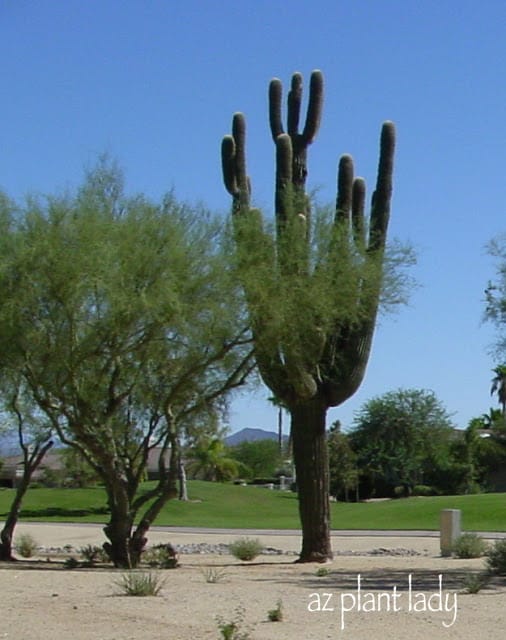
This photo was taken when we had just finished adding the plants in our hummingbird garden.
A few years later, as I was driving to work on a gorgeous summer morning, little did I know that my beautiful saguaro had fallen victim to the torrential rain and high winds we had experienced the night before.
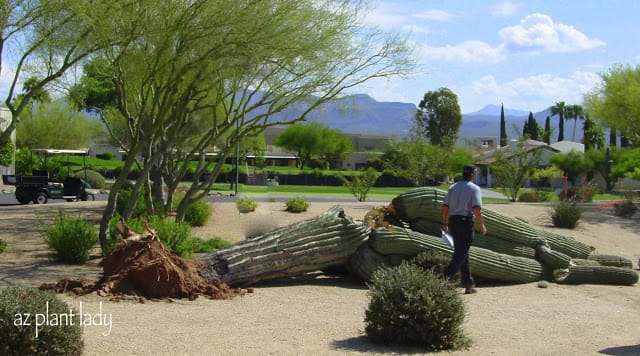
As soon as I had arrived at work, my crew told me what had happened and I drove my little golf cart out there as fast as possible.
It was such a sad sight. I literally felt sick to my stomach. To get a sense of how large it was, my co-worker who is pictured above is about 6′ 4″ tall.
As I got up close to examine it, I saw something else that was also quite sad….
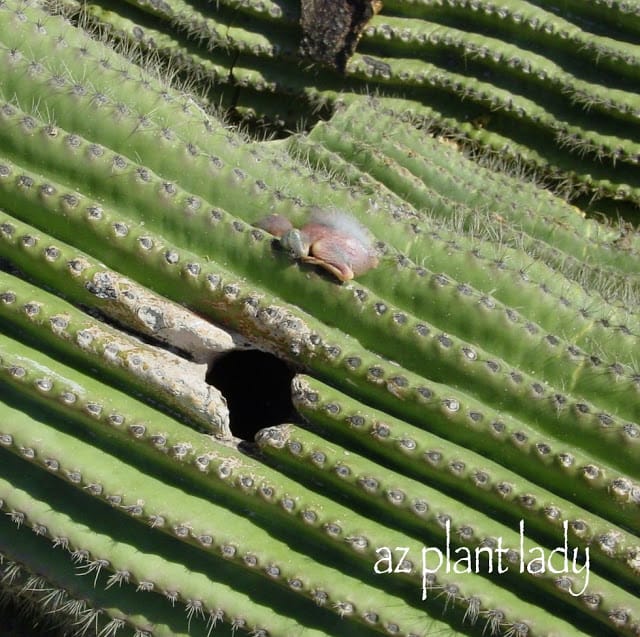
A tiny baby Cactus Wren had also fallen victim. The force of the falling saguaro dislodged him from his nesting hole. His mother was close by and had also died.
The last incident that I would like to share with you also happened around the time of the fallen saguaro.
I was driving around the golf courses, checking on landscape areas and the many trees that we had growing on the courses. This was part of my daily routine.
There were beautiful homes and landscapes that backed up to the golf courses. As I was passing one of the homes, I noticed something up in the top reaches of their stately saguaro that was not a welcome sight.
Did you know that saguaros can get sick?
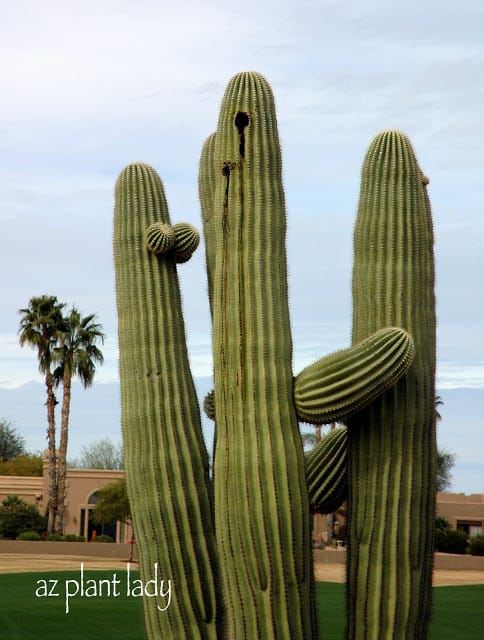
Okay, it may not be obvious, but look closely towards the top. Do you see two brown/black spots with liquid seeping out?
Here was a classic example of bacterial necrosis (Erwinia carnegieana).
The ‘black goo’ that is excreted smells absolutely awful. You may be wondering how it spreads. Well, insects and small animals are the primary way that it is spread. They visit an infected cactus and then fly to your cacti, spreading the bacteria.
So, can you leave it alone and hope it will go away? Well, there is a chance that the saguaro itself can seal off the infection by forming a special kind of tissue known as ‘callus’.
But this is not always successful and if the bacterial necrosis spreads, it will lead to the death of your saguaro, causing it to fall, which can also cause damage to those things that are in its path.
So what can you do?
Well, if the infection is where you can reach it, you can cut out the infected area. Using a sharp knife, begin cutting out all black, gooey areas, taking care to sterilize your knife after each cut using rubbing alcohol.
You need to remove all diseased cactus flesh and cut into at least a 1/2″ of healthy saguaro tissue. To make sure that water cannot accumulate in the area, use a spoon to gently slope the bottom of the hole. Make sure that the walls of the now enlarged hole are smooth with no puncture marks.
The last step involves spraying the entire, excavated area with a 10% bleach mixture (9 parts water to 1 part chlorine bleach). This should kill any remaining bacterial.
Another option is that you can call a cactus professional and have them treat the infection.
For more information you can click here. About halfway down the page, you will find excellent information on bacterial necrosis.
I am happy to say that there is a happy ending to this last saguaro incident…..the homeowners had it treated and it is still alive and thriving 8 years later 🙂








